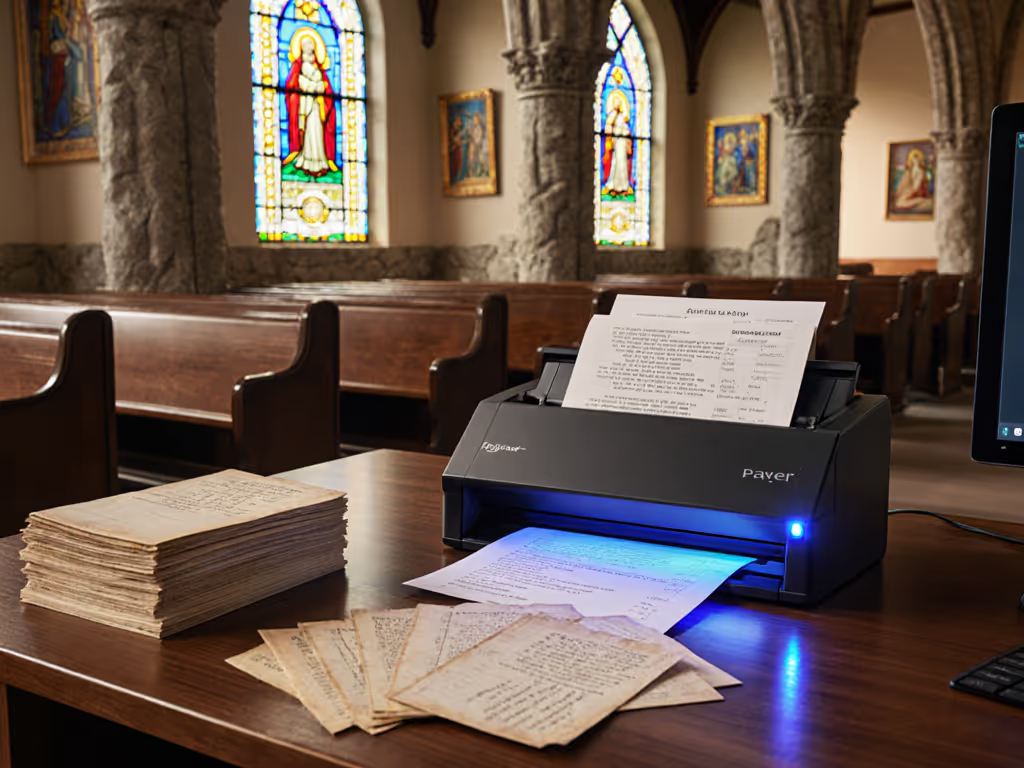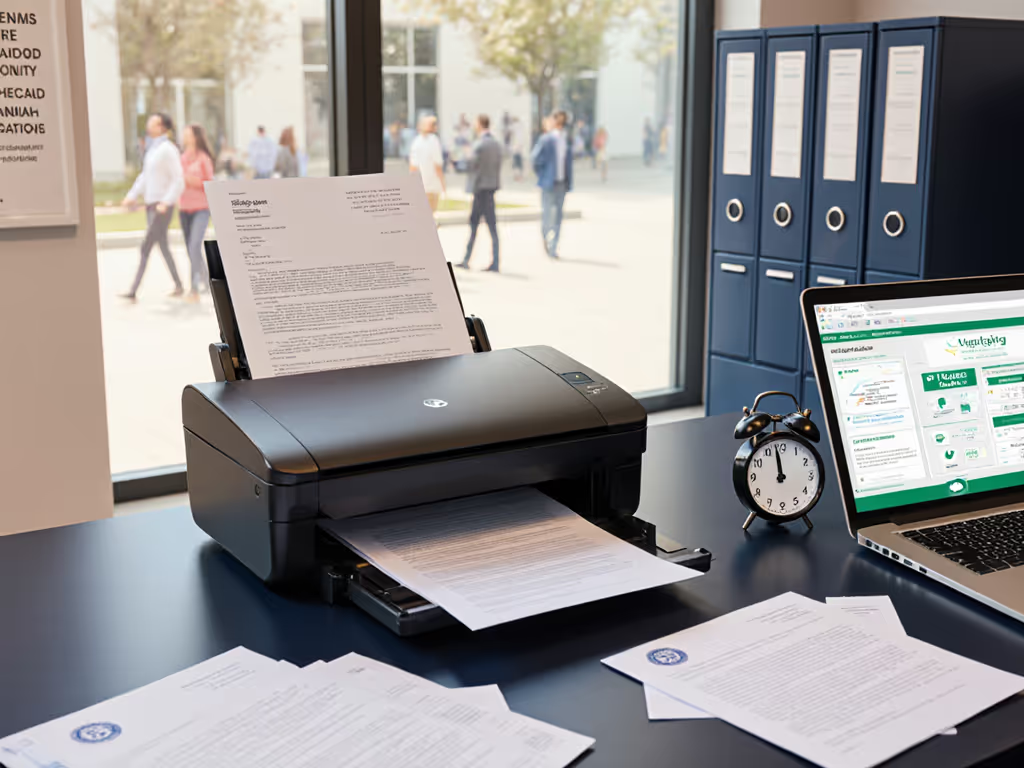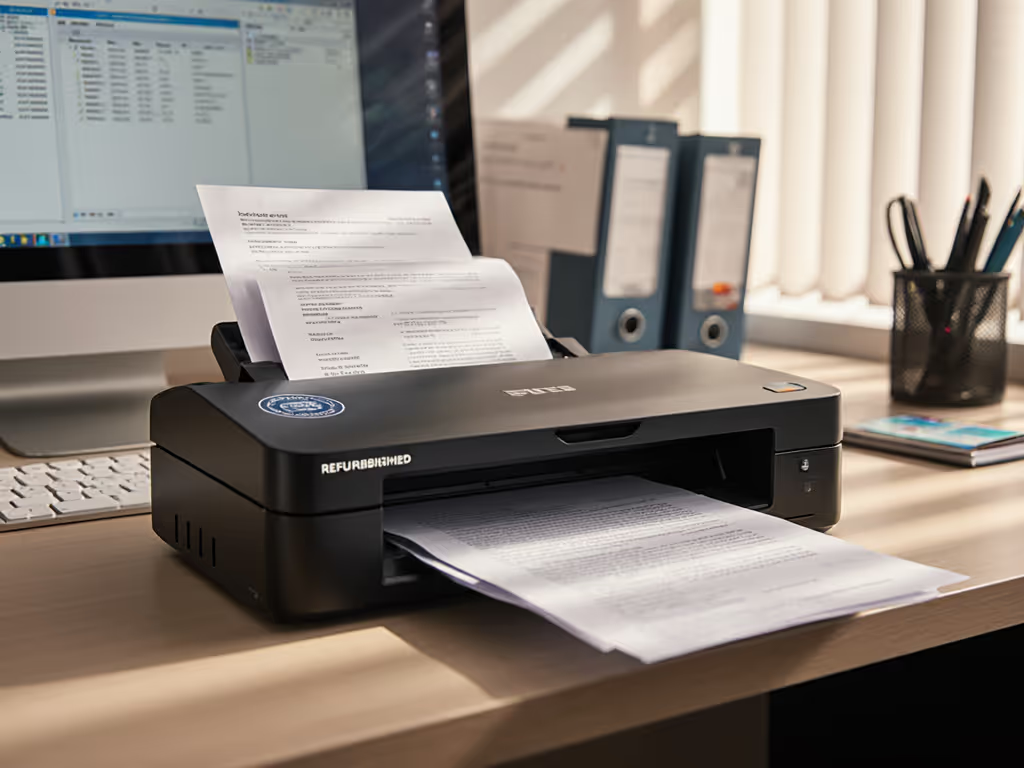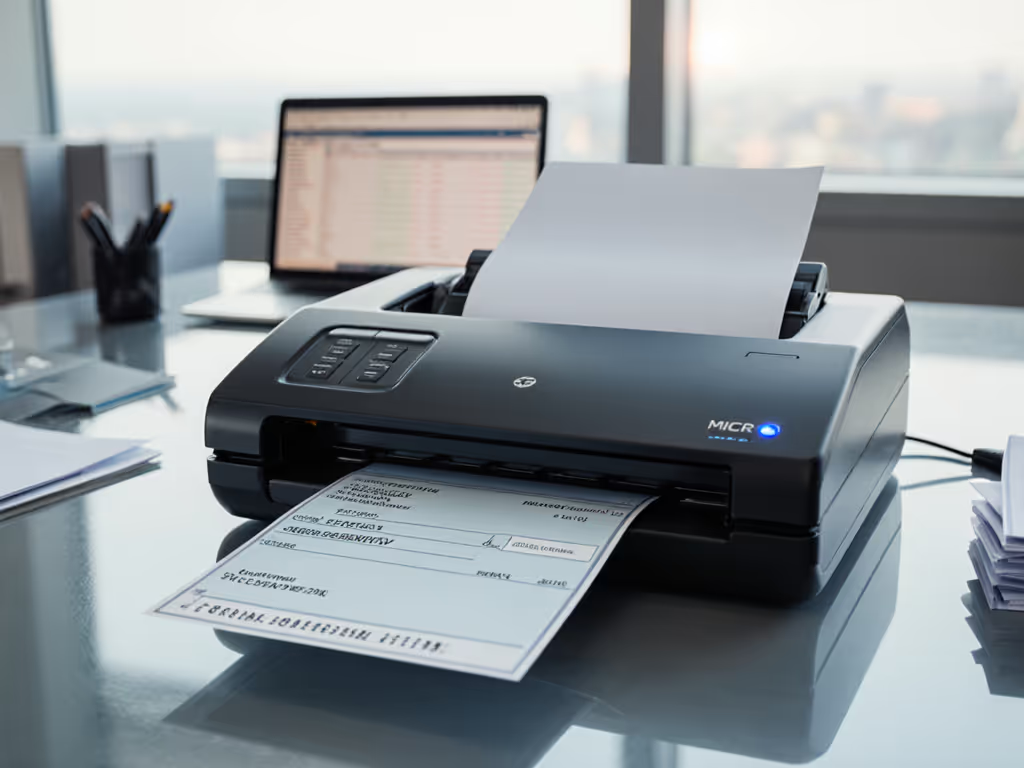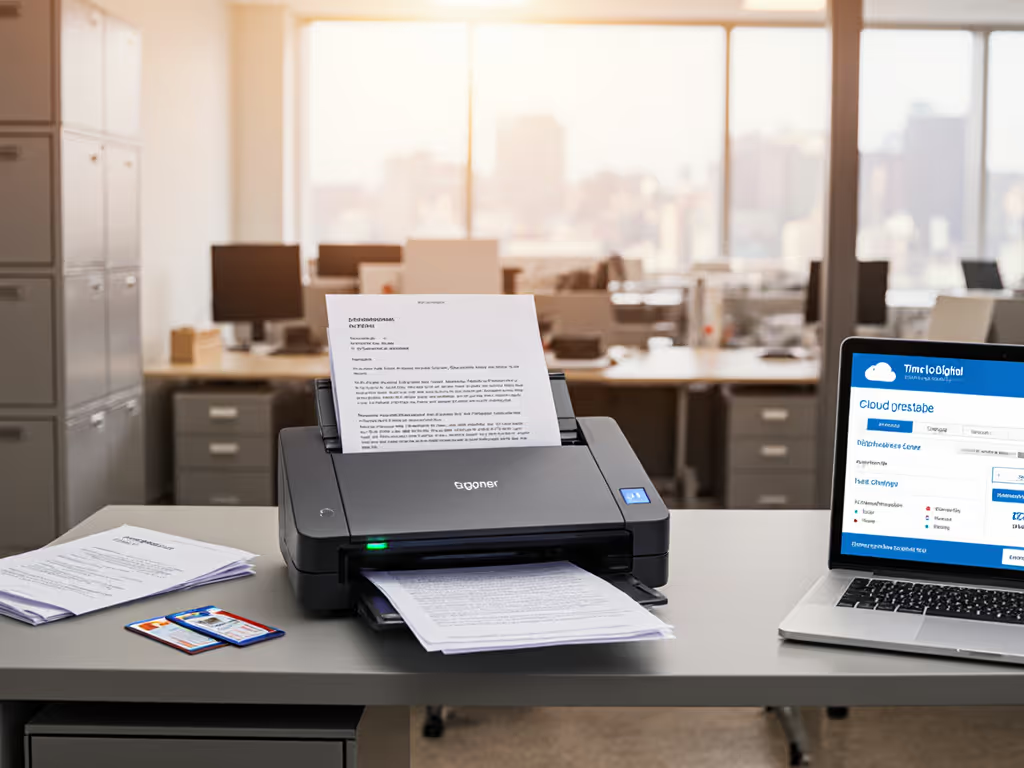
Sustainable Scanning Solutions: Fast, Reliable Paperless Workflows
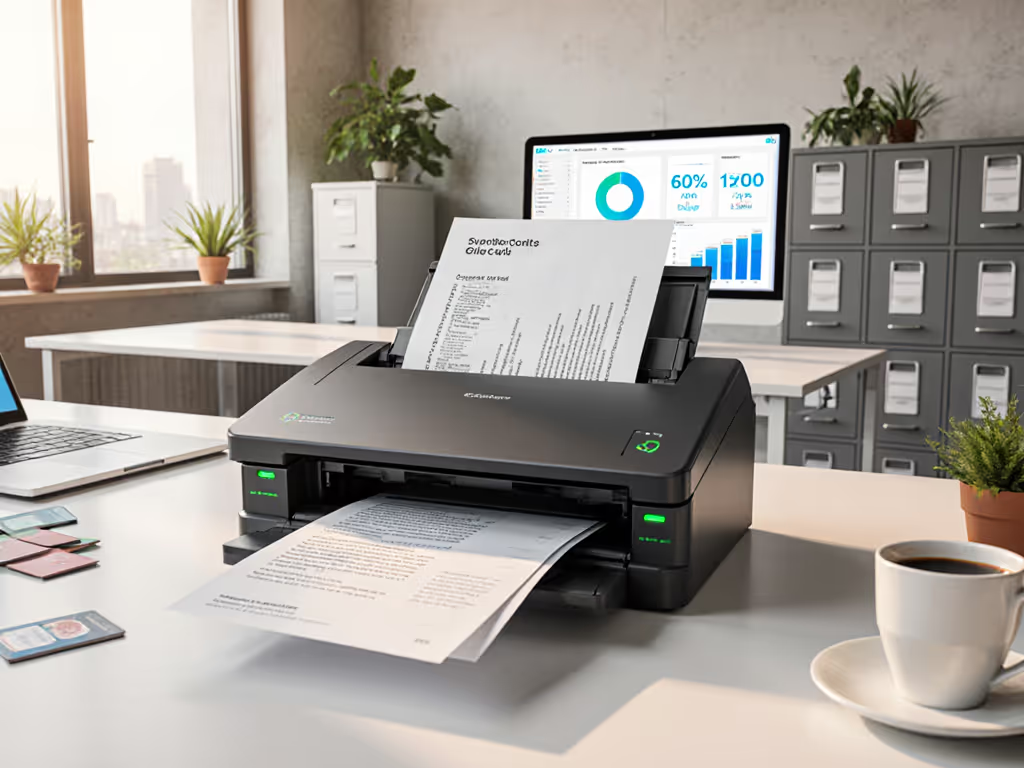
When your eco-friendly document scanners vanish documents during routine Windows updates, sustainability becomes a punchline. True sustainable scanning solutions aren't just about recycled plastics or low-wattage LEDs, they are about workflows that survive Patch Tuesday. I have seen too many law firms lose scans to flaky integrations, forcing them back to filing cabinets. The fix? Scanning pipelines that click once and stay clicked through updates. Forget marketing fluff about "going green," sustainability in scanning means reliability that survives your team's coffee breaks and Microsoft's release cycles.
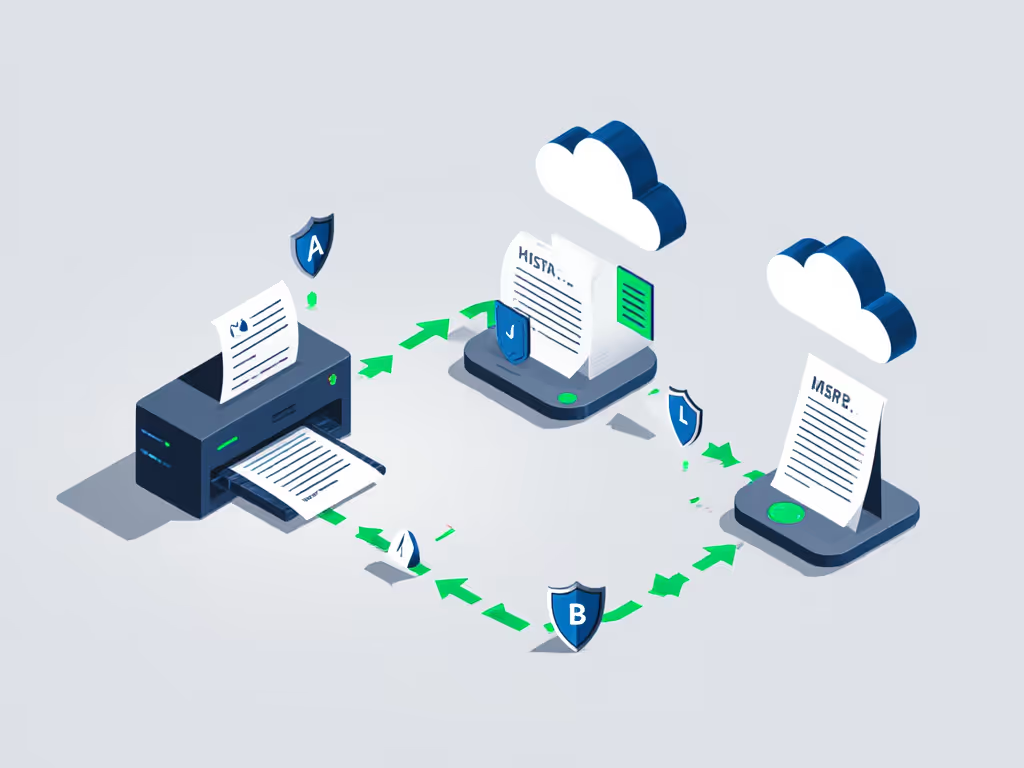
Why "Green" Scanners Often Fail Your Workflow (And How to Fix It)
Q: My new "eco-friendly" scanner claims to save energy, but scans still get lost in transit to SharePoint. Isn't sustainability about more than just wattage?
A: Absolutely. Energy efficiency is table stakes. Real sustainability means end-to-end reliability. That Epson WorkForce DS-790WN using LED lights (no warm-up = instant scanning) will not help if its SharePoint connector breaks after an OS update. I rebuilt a firm's pipeline after an update disaster: TWAIN to watch folder → barcode separation → Power Automate flow with versioning. Updates happened, documents landed. Logs or it didn't happen. Focus on:
- Vendor-neutral authentication: OAuth 2.0 for SharePoint/Google Drive, not proprietary sign-ins
- Stateless routing: Use intermediate watch folders, not direct-to-cloud scanning prone to token expiration
- Version-controlled templates: Store naming conventions as JSON in cloud storage, not buried in scanner UI
Paperless office environmental benefits only materialize when scans consistently replace paper. If staff revert to printing because scans vanish, you are burning carbon and productivity.
Q: How do we avoid "eco-mode" slowing down scanning for time-pressed teams?
A: Modern energy efficient scanners like Epson's DS-530II (using 34% recycled plastic) achieve speed through efficiency. Their LED light source cuts warm-up time, not throughput. But speed without routing logic is pointless. Example: A medical office scanned 200 patient forms per hour, yet staff spent 45 minutes each hour filing. We implemented:
- Stepwise routing: Scan → auto-crop deskew (using open-source ScanTailor) → metadata extraction via Power Automate
- Rules-based filing: "If form_type=HIPAA, route to /Compliance/Clients/{ClientID}"
- Jam-proof batching: Barcode sheets separated batches; unexpected jams no longer killed 100-page runs
This cut time-to-digital from 62 to 8 minutes. True efficiency isn't pages-per-minute, it is hours-reclaimed-per-week. Reducing carbon footprint with scanning requires eliminating rework, the hidden energy sink.
Q: Our "sustainable" scanner uses recycled materials but jams constantly with mixed receipts/stapled docs. How's that eco-friendly?
A: Sustainability dies at the first paper jam. Physical durability is environmental impact: 30% of scanners fail within 2 years due to worn rollers (industry data). Prioritize:
- ADF engineering: Look for curved-feed paths (like Fujitsu's ScanSnap) that handle business cards and letter-size without tweaks
- Predictive maintenance: Track "roller wear" via usage logs; budget for replacements at 50k pages
- Jam recovery protocols: Auto-save partial batches to temp storage; no more "scan 100 pages, lose 99"
One real estate agency I worked with cut paper waste 40% after we replaced a brittle scanner with a ruggedized model. Their "green" win wasn't wattage, it was no longer refiling 50 lost contracts monthly.
Q: Can we really measure carbon reduction from going paperless?
A: Yes, but only with reliable workflows. A 2024 UC Berkeley study confirmed: offices using unreliable scanners showed no net carbon reduction. Why? Staff printed duplicates of "lost" scans, creating 2x waste. Valid environmental metrics require:
| Metric | Unreliable Workflow | Reliable Workflow |
|---|---|---|
| Scans printed | 57% | 2% |
| Avg. pages/reclaim | 18.3 | 0.4 |
| Storage energy | High (multiple copies) | Low (single source) |
Focus on consistency: A steady 500-page/day scan-to-cloud pipeline prevents 1.2 tons of CO2 per year (vs. printing/filing). Flaky scanners? They are just expensive paperweights.
The Integration-First Approach to Sustainable Scanning
Green office technology that lasts 5 years isn't about specs, it is about integration hygiene. Example: That small law firm's scanner didn't fail because of Windows updates. It failed because scans routed directly from scanner software to SharePoint. When Microsoft changed TLS requirements, everything broke. Our fix:
- Decouple the layers: Scanner → \scan\watch_folder (local)
- Neutral routing hub: Power Automate checks \watch_folder hourly
- Fail-safe versioning: Pushes to SharePoint with client/matter metadata
Logs or it didn't happen: We added email alerts for failed pushes. After 14 months, zero lost scans.
This minimalist architecture survives OS updates, network flaps, and even angry interns. For a deeper walkthrough of tool choices and failure-safe patterns, see our scanner cloud integration guide. Vendor lock-in? Avoided. Consumables costs? Predictable (just roller replacements). Your sustainability ROI skyrockets when scans stay digital.
Your Next Step: Audit for Workflow Sustainability
Don't just buy a scanner with recycled plastic. Audit how it talks to your stack:
- Test update resilience: Run a scan batch during a Windows feature update
- Verify cloud routing: Does it fail gracefully if OneDrive is throttled?
- Check log accessibility: Can you prove every scan succeeded? (Logs or it didn't happen)
True sustainability means your paperless workflow outlives the scanner's warranty. When TWAIN drivers update or cloud APIs change, your documents shouldn't vanish. Because if integrations are fragile, the workflow isn't real, and neither is your carbon savings.
Further Exploration: Calculate your actual scanning carbon footprint with our workflow reliability checklist. (It's not just about watts, it's about wasted paper from failed scans.)

